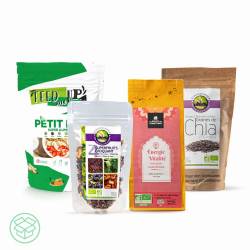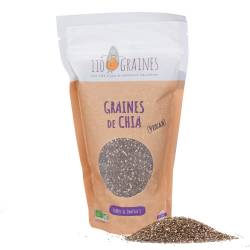Presentation
Our dietician will regularly speak to share her experience and talk to you about food in the nutritional sense of the term. Flora Massanella has been a liberal dietician-nutritionist and psycho-nutritionist for more than 15 years. You can find out more about her on her presentation page.
In the meantime, we leave you with his article on Chia seeds. Happy reading :)

Table of contents
- About chia seeds
- Why choose to consume chia seeds
- Update-on-the-benefits-of-dietary-fiber
- Fiber and chia seeds
- Update on the benefits of polyunsaturated fatty acids (PUFA)
- Polyunsaturated fatty acids and chia seeds
- Other-benefits of chia seeds
- Update on the nutritional interests of proteins and their content in chia seeds
- Update on the nutritional interests of calcium and its content in chia seeds
- How to consume chia seeds
Chia seeds are increasingly consumed for their taste and especially for their certain nutritional benefits. But what exactly are chia seeds and what are their specific nutritional benefits?
Our nutrition expert reveals the secrets of these little seeds.
About chia seeds…
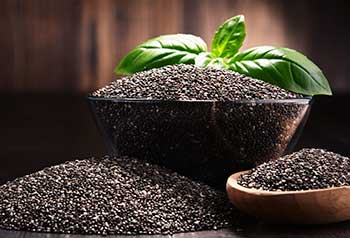 Chia seeds, with the scientific name of Salvia hispanica, are very small seeds whose ancestrality is astonishing. Originally from Mexico, their culture dates back millennia, from pre-Columbian times (and even before that according to some sources). According to etymology, the name chia would be relative to "strength", "which makes you strong". Current figures show that Europe imports around 20,000 tons of chia seeds per year, including 500 as far as France is concerned.
Chia seeds, with the scientific name of Salvia hispanica, are very small seeds whose ancestrality is astonishing. Originally from Mexico, their culture dates back millennia, from pre-Columbian times (and even before that according to some sources). According to etymology, the name chia would be relative to "strength", "which makes you strong". Current figures show that Europe imports around 20,000 tons of chia seeds per year, including 500 as far as France is concerned.
Vigilance +++: in food, it is always better to opt for quality food, either with a label, or from organic farming, or both ! Avoid pesticide residues at all costs! The chia seeds marketed here at ESSENCE BOX come from organic farming, FR-BIO-01 certification.
Consult the "quality" labels of Essence-Box

Why choose to consume chia seeds?
The two major health benefits of chia seeds are based on their fabulous content:
- Fiber.
- In polyunsaturated fatty acids (omega3).
Update on the benefits of dietary fibre:
Here are the key things to remember about the benefits of dietary fibre:
- Regulation of transit: by increasing the volume and weight of the stool, dietary fiber regulates intestinal function (including a contribution to combating constipation),
- Regulation of postprandial glycaemia in healthy and diabetic subjects, thanks to a slowing of gastric emptying, a delay in the hydrolysis of starch and a slowing down of absorption of glucose by the small intestine (appetite suppressant effect, hypoglycemic effect),
- Blood pressure regulation,
- Lower cholesterolemia (= lower cholesterol in the blood),
- Prophylaxis in the occurrence of certain intestinal diseases (including colorectal cancer).
Fibers and chia seeds:
Chia seeds contain 27 to 30 g/100 g of fibre. If this figure is not telling, remember that vegetables such as leeks or green beans provide about 3 g per 100 g (and it may be less depending on the vegetable). So of course, consuming 100 to 200 g of green beans or leeks is much easier, but read on.
Current fiber consumption in France is largely insufficient. The ANC (Recommended Dietary Intakes for the French population) are around 30 g/day. Nutritionists are sorry, but our diets are low in fiber. Chia seeds therefore have their place in improving our intake. A tablespoon of about ten grams can provide as much fiber as a starter of raw vegetables (100 g of vegetables).
Conclusion: Faced with a diet so low in fiber, even deserted, the use of chia seeds (like other seeds, see the site), is a must.
Advice from the expert:
Consume, every day, 1 to 2 tablespoons (10 to 20g) of chia seeds, in addition to the intake of vegetables, fruits, legumes (chickpeas, red beans, lentils, etc.), wholemeal/seed bread . For the record: 5 servings of fruits and vegetables per day correspond to 5 servings the size of a closed fist. This trick allows a significant quantitative benchmark.
Update on the benefits of polyunsaturated fatty acids (PUFA):
Among the polyunsaturated fatty acids, there are two families of fatty acids called omega 6 and omega 3, derived respectively from linoleic acid (omega 6) and alpha linolenic acid (omega 3). Beyond these somewhat complex scientific names, one thing is easy to remember: these PUFAs are essential to us, because their roles are multiple:
Roles of omega 6:
- Quality energy source (calories)
- Role in the reproductive function (fertility, gestation)
- Role in epidermal function (maintaining skin integrity, regeneration of injured tissue)
- Role in the prevention of vascular accidents
- Role against the formation of blood clots (thromboses)
- Lower of LDL cholesterol which is atherogenic (= promotes atherosclerosis). Omega 6s are said to be cholesterol-lowering.
- Role in immune system activity and inflammatory response
- Role in building nerve cells and nerve tissue
Daily requirement: 4.4 g/day
Roles of omega 3:
- Quality energy source (calories)
- Function in retinal development and physiology
- Involvement in vascular physiology and platelet aggregation phenomena (such as omega 6).
- Role in cardiovascular prevention
- Role in the development of the brain and the nervous system and in parallel, together with omega 6, they contribute to the membrane structure of the lipids of the nervous system
- Role in controlling the fluidity of cell membranes
- At high doses, omega-3s play an anti-inflammatory role in osteo-articular pathologies (rheumatoid arthritis, for example)
- Namely, omega 3 deficiency increases the risk of AMD
Daily requirement: 1.8 g/day

Polyunsaturated fatty acids and chia seeds:
The omega 6 content in chia seeds is on average 6 g/100g, and the omega 3 (alpha linolenic acid) intake is around 18-20 g/100 g. These levels are particularly noteworthy for omega 3, because looking closely at the omega 3 composition of the vegetable oils that are the richest in it, we are far from these fantastic contributions. The oils that have the most of it, in other words walnut, rapeseed and soybean oils, do not exceed 11 g/100 g.
As for fiber intake, the spontaneous consumption of the French shows a severe deficiency in terms of omega 3 intake. From then on, chia seeds again become one of the imponderables on our plates.
Some will think that if it is a foodstuff high in fat, the risk is to gain weight? Remember that too much fat can lead to weight gain. If the intake remains sufficient, without excess, no weight gain will be attributed to chia seeds. Do not forget to specify that lipids (fats) must represent 35 to 40% of our total energy intake. On the other hand, it will be necessary to ensure the quality of the fats, thus avoiding the use of foods rich in saturated fatty acids, trans-fatty acids, transformed fats, etc.
Advice from the expert:
For fans of olive oil (very low in omega 3), it will be necessary to take care to consume 1 tablespoon per day (10 g) of chia seeds for a optimal intake of alpha linolenic acid (omega 3). For those more adept at regular consumption of rapeseed oil and walnut oil, 1 teaspoon might be sufficient. In order not to generate an error of consideration, it must be understood by this that a tablespoon can cover 100% of the intake of alpha linolenic acid (omega 3), but not all of the intake of fatty acids in general. As explained above, lipid intake should be around 35 to 40% of total daily energy intake, but including a minimum of 5% of omega 6 and 3 polyunsaturated fatty acids (PUFAs).
The other benefits of chia seeds
Other interesting contents of chia seeds include protein and calcium.
Update-on-the-nutritional-interests-of-proteins-and-their-content-in- chia seeds:
Proteins have very different functions:
- Fundamental plastic and structural role in the development of different tissues: muscles but also skin, hair, nails… (collagen, keratin…).
- Functional role: for the formation of hormones.
- Role in immunity (immunoglobulins).
- Role in motor skills.
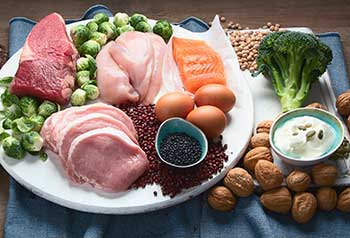 The analysis of chia seeds shows a very interesting protein content: 17-20 g/100 g. By way of comparison, ground beef, turkey cutlet, chicken leg provide an average of 26 g/100 g, between 18 and 23 g/100 g for fish, 20-22 g/100 g for cheeses (but >28 g/100 for cooked pressed cheeses such as Gruyère or Comté), 13 g/100 g for eggs (be careful, even if this figure may seem low, the amino acids of the egg are THE reference in terms of protein intake). So what about protein in chia seeds?
The analysis of chia seeds shows a very interesting protein content: 17-20 g/100 g. By way of comparison, ground beef, turkey cutlet, chicken leg provide an average of 26 g/100 g, between 18 and 23 g/100 g for fish, 20-22 g/100 g for cheeses (but >28 g/100 for cooked pressed cheeses such as Gruyère or Comté), 13 g/100 g for eggs (be careful, even if this figure may seem low, the amino acids of the egg are THE reference in terms of protein intake). So what about protein in chia seeds?
First of all, no one will consume 100g of chia seeds (the weight of a ground beef), on the other hand, there is something unknown about the quality of their amino acids. In some literature, you can read that chia seeds are the only food from the plant world to be well supplied with each of the essential amino acids. But, sorry to disappoint you dear reader, the essential amino acid profile of chia seeds is not published. If this information were correct, however, we would have to remain vigilant because, despite a composition that could seem ideal, scientific data are still lacking: biological value, bioavailability, digestibility and CUD (Coefficient of Digestive Utilization, i.e. the actual portion of nutrients that does not end up in feces)? While the other foods are pretty well documented, chia seeds are not yet. However, you can consume them, but in addition to a varied and balanced diet. Vegans and vegetarians are strongly advised not to place them at the heart of their diet, neglecting other sources of intake.
Advice from the expert:
Eating these seeds will be a qualitative bonus, since the proteins contained in chia seeds are not associated with poor quality fats or excessive salt content. But do not expect more today.
To diversify vegetable protein intake, think of a simple and tasty combination: cereals + legumes during the same meal, and why not by sprinkling everything with chia seeds!
Finally, to reassure vegans and vegetarians who love chia, it should be noted that the consumption of these seeds remains essential to cover the needs for essential fatty acids

Update-on-the-nutritional-interests-of-calcium-and-its-content-in- chia seeds:
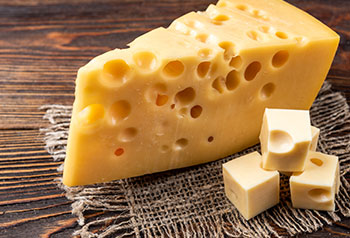 For very essential information, it seems fair to remember that our body is made up of 1 to 1.2 kg of calcium, which makes it the most abundant mineral element in our body. 99% of this calcium is fixed at the bone level and of course in a lesser proportion at the dental level (the remaining 1% is located at the level of the muscles in the extracellular fluid).
For very essential information, it seems fair to remember that our body is made up of 1 to 1.2 kg of calcium, which makes it the most abundant mineral element in our body. 99% of this calcium is fixed at the bone level and of course in a lesser proportion at the dental level (the remaining 1% is located at the level of the muscles in the extracellular fluid).
The main interest of calcium is of course heard its role in ossification. But the other roles are not negligible: muscle contraction and transmission of nerve impulses, regulation of heart rate, activation of many enzymes and release of hormones.
Analysis of chia seeds shows a very interesting calcium content (500mg/100g). You should know that cooked pressed cheeses such as Emmental or Comté contain more than 900 mg of calcium / 100 g.
While the recommended nutritional intake of calcium for an adult man or woman is increased to 900 mg/day (1200 mg for adolescents and seniors), what place should be given to chia seeds to cover needs?< /p>
Advice from the expert:
For regular consumers of cheese, dairy products, fruit and vegetables, calcium needs will be easily met, as chia seeds do not constitute particular interest in covering needs. On the other hand, for those who never or rarely consume them, chia seeds can be a small bonus depending on the quantities consumed. 1 tablespoon of 10g will hardly provide more than 50mg of calcium, not allowing at all the respect of the recommended nutritional intakes (a classic plain yogurt provides 180mg per serving). To improve the coverage of the calcium needs of vegans, for example, the share of fruits, vegetables and richly mineralized water will be essential.

How-to-consume-them?
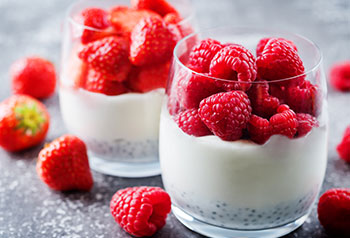 Now that you know everything about the prodigious nutritional benefits of chia seeds, the chef offers you simple and tasty tips to enjoy them!
Now that you know everything about the prodigious nutritional benefits of chia seeds, the chef offers you simple and tasty tips to enjoy them!
- To sprinkle on salads or soups.
- Simply mix them with a dairy product, a smoothie, muesli.
- Use them as a base for porridge instead of the usual oat flakes (swell the seeds the day before in vegetable milk, for example; and the next day, add almonds, raisins, etc.).
- Use them as an egg substitute in cakes and cakes (1 egg = 1 tbsp unground chia seeds. Standard reconstitution: 30ml water + 1 tbsp chia seeds, let stand in least 15 minutes before use). Namely, the use of flax seeds as an egg substitute is based on the same principle, but it is then preferable to grind them before use.
Linked products




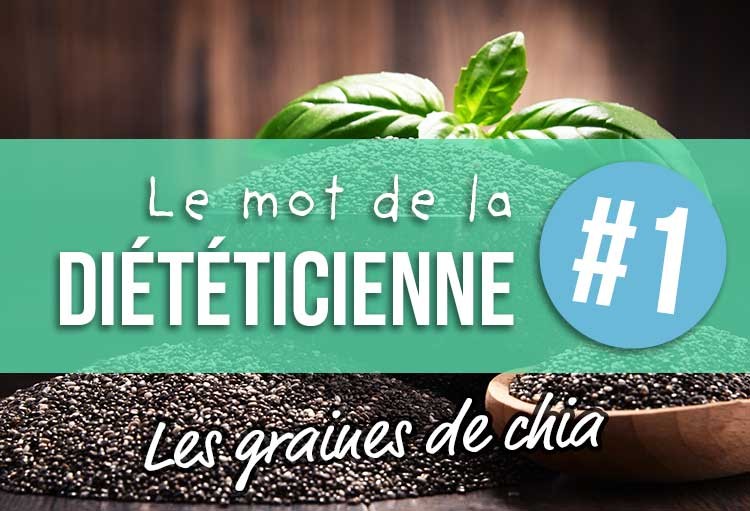
 By Flora Massanella - Diététicienne
By Flora Massanella - Diététicienne

